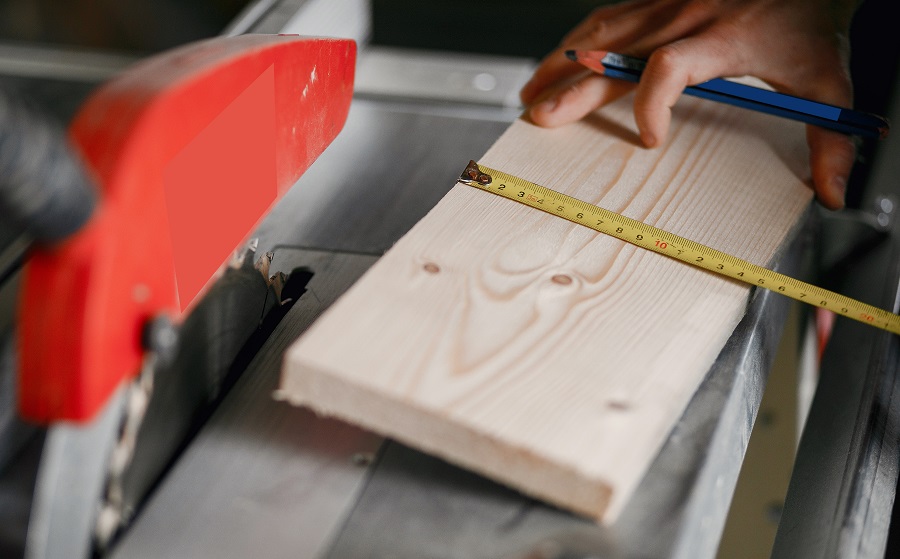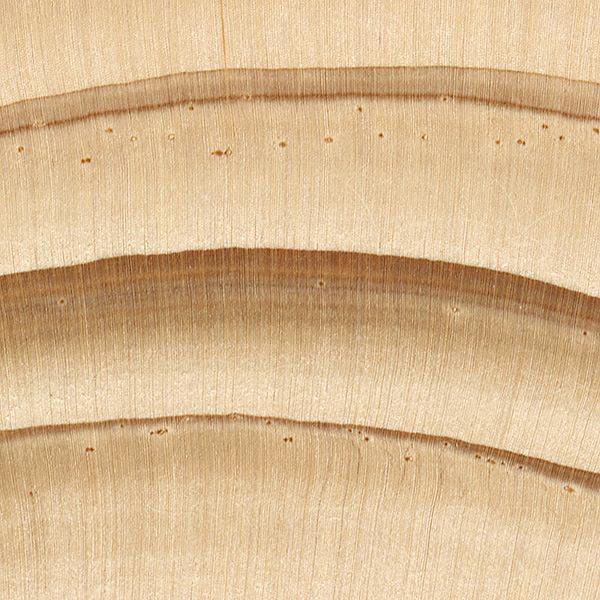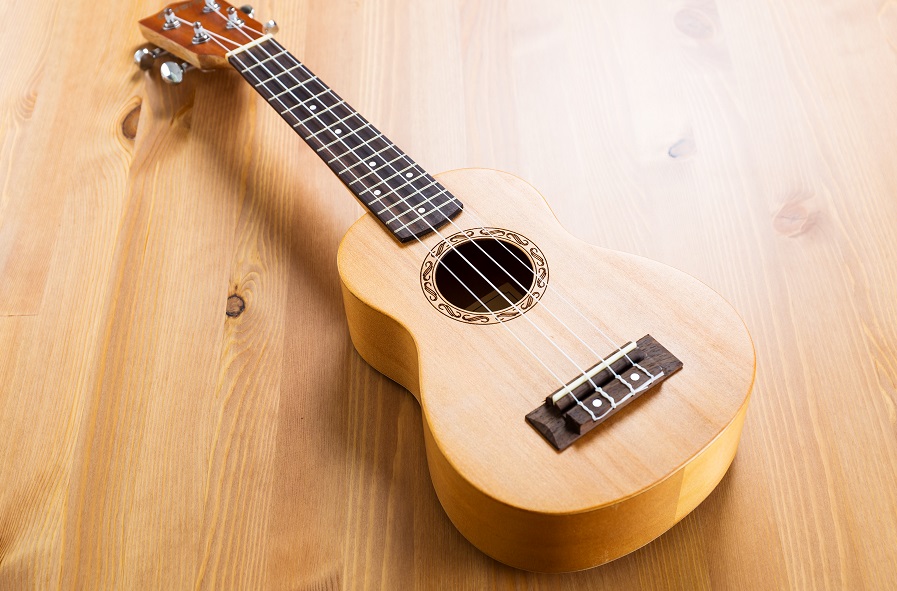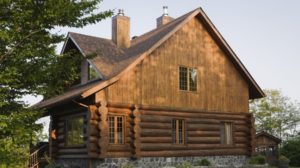Unlike hardwood, which differs in colour, pore size and arrangement or fibre appearance, and for this reason is preferred in the furniture industry, softwood is much less individualised and the species are easily confused. However, softwood is more widely used in industry, in construction, interior decoration, derived timber products, furniture and paper. The most widespread species of softwood in our country is spruce, which occupies 22% of the forest cover, i.e. more than one million hectares. This is a good reason to study it more closely and discover its pluses and minuses.

Species widespread in northern, central and eastern Europe
Picea abies (Norway spruce, European spruce or German spruce) is native to northern, central and eastern Europe, reaching as far north as the Arctic Circle and the Ural Mountains are considered the eastern limit. Here it encounters Siberian spruce (Picea obovata) with which it hybridises easily. This is why the boundary is only informative, the real boundary is impossible to determine.
In addition to its natural distribution, spruce is widespread in plantations, in its natural range, but also outside of it, being a species cultivated for wood and for use as a Christmas tree. It is the second most used species for this purpose, after Nordmann fir tree. It grows naturally from 500 m to 1700 m, even 2000 m altitude, but in plantations it grows well at 250-300 m. As an ornamental tree it can also grow in lowland areas, but it lives less than a mountain tree, which can live for 400-500 years. It becomes exploitable after 80 years, with the greatest amount of wood being obtained around 120 years of age.
In our country, the spruce is a mountain and subalpine species, being present in almost all the Carpathian chain. It is the most widespread coniferous species, occupying 22% of the forest cover. It prefers a damp and cold climate, is more demanding than fir, but less demanding than Scots pine, being sensitive to drought in the first 2-3 years of life. There are several varieties of spruce that differ in crown shape, branching, trunk or cone colour and other such criteria.
Spruce, spruce or red fir
Spruce, spruce or red fir are the names given to this species. Red fir is named after the slightly reddish colour of the trunk bark. The tree frequently reaches 30-40 m in height and 1 m in diameter, but can reach 60 m in height and 2 m in diameter. A characteristic of the spruce is trailing rooting, i.e. it can root on shallow soils on cliffs, with the root only 20-30 cm into the ground, making it less wind-resistant. This is why spruce trunks are frequently seen felled in forests.
The stem is straight and cylindrical, covered with reddish-brown, sometimes greyish bark. The crown is pyramidal-conical even in old age, and the branches are arranged around the trunk in a helical shape. The leaves are needles arranged around the branch, persistent, stiff, pointed, dark green. Fruits are green and reddish cones when young, turning brown when mature. The hanging cones, 10-15 cm long, are an element of differentiation between spruce and fir, whose cones face upwards. The seeds are about 4 mm long, brown and have a 12-14 mm wing that helps them spread.
Structure and properties
Freshly cut spruce wood has a strong resinous smell and a creamy white colour with a slight yellowish tinge. It begins to darken in colour immediately after cutting, the light accentuating the process, and the colour takes on a reddish-brown tinge. There is no difference between sapwood and heartwood, but the annual rings are clearly distinguishable, the later wood being darker and denser. The transition from early to late wood is gradual. The fibre is fine, straight and uniform, with resinous channels visible under the microscope. When freshly planed, the wood has a slight sheen.
The average density of spruce varies between 410 and 470 kg/m³, depending on growing conditions. Density is closely related to the width of the annual ring, the narrower the ring, the denser the spruce. This is important to know because mechanical properties of wood decrease with density. Wood with ring widths between 4 and 6 mm is considered good for structure. Properties also decrease with increasing moisture content, with suitably dry wood at 8-12% having the best mechanical properties. Durability is medium to low, with spruce having low resistance to rot and fungal attack. It has good elasticity, and specimens grown under special conditions have a special resonance and are used to make musical instruments.
Spruce is easily processed by hand or machine, except in the knot area. The presence of resin may load the knives which will have to be cleaned with white spirit, turpentine or other special thinners. Glues smoothly, but is harder to stain because of very low absorption in latewood areas. For this reason it tends to stain backwards, like a photo negative (light areas become dark and vice versa). Special stains, with resin content that prevents absorption, are recommended for uniform staining. Large bags of resin can cause problems when finishing, so it is advisable to remove them. Can be coated with oil, wax, varnishes and paints.

Uses
Spelt is used as timber in general, in the construction of timber-framed houses or log or round timber houses or in the construction of the roof ashlars. It is used in furniture making and veneer cutting. It is the raw material for making chipboard, MDF or wood panels and laminated beamsbut also for pulp and paper production. It is used in interior design for various furnishings. Resonance wood is used to make classical guitars, violins and violas.
Even though it has a low resistance to rotting, it is also widely used outdoors, for cladding houses, making doors and windows, building pergolas, gazebos and fences. In this case, the wood must be well protected with special materials with good sun and weather resistance or autoclave impregnated with special substances that increase its resistance to water and fungi.
Spruce bark is used to obtain tannin, and various oils are extracted from the keratin, such as turpentine balma natural thinner. The buds are used in herbal medicine.
Spruce wood can also be used as fuel. It is mostly used for pellets and lighters, but it is also used as a firewood. Not recommended for open fireplaces because the resin causes cracking and sparking.
Spruce is a species that protects slopes from landslides. Its crown has the ability to retain a large amount of water or snow which then stops soaking into the ground making it unsafe.

I hope you find the information interesting. As usual, we welcome additions. And if you have any questions or queries, please leave them in the space below. I will certainly answer them.



























Add comment